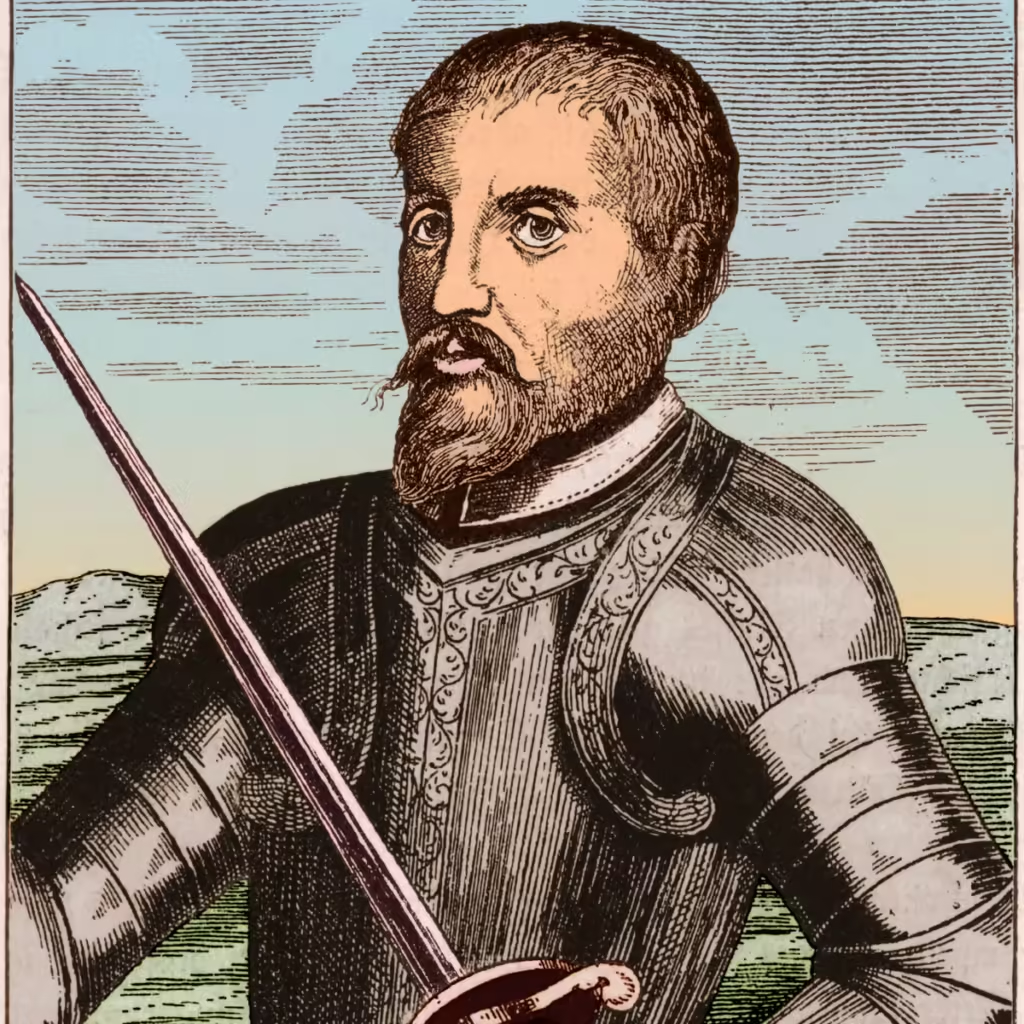
Table of Contents
Who Was Hernando de Soto?
Hernando de Soto was a prominent Spanish explorer and conquistador known for his key role in the conquest of Peru and his exploration of North America. In the early 1530s, he participated in Francisco Pizarro’s expedition that led to the fall of the Incan Empire, and later in 1539, he led his own expedition to North America, where he famously discovered the Mississippi River. De Soto died on May 21, 1542, from a fever during his expedition in what is now Ferriday, Louisiana. Before his death, he appointed Luis de Moscoso Alvarado as his successor to lead the expedition.
Early Life
Hernando de Soto was born around 1500 in Jerez de los Caballeros, Spain, to a noble but financially struggling family. He spent his early years in the family manor and, thanks to the generosity of Pedro Arias Dávila, was able to attend the University of Salamanca. While his family hoped he would become a lawyer, de Soto expressed his desire to explore the New World. In 1514, he joined Dávila, then the governor of Darién, on an expedition to the West Indies. De Soto quickly demonstrated his skills as an exceptional horseman and leader, eventually commanding a cavalry troop that explored regions from Panama to Nicaragua and Honduras. His bold negotiations with indigenous people led to significant profits, earning him recognition as a successful explorer.
Conquest of Peru
In 1532, Francisco Pizarro appointed de Soto as second in command of his expedition to conquer Peru. During the campaign, de Soto discovered a route to Cuzco, the capital of the Incan Empire, and played a crucial role in the city’s capture. His strategic insights and leadership helped secure victory for the Spanish forces. After the conquest, de Soto returned to Spain in 1536 with immense wealth, receiving 18,000 ounces of gold from the spoils of the Incan Empire. A year later, he married the daughter of his former patron, Dávila, and settled into a comfortable life in Seville.
Exploring North America
Despite having recently married and established a new home in Spain, Hernando de Soto grew increasingly restless upon hearing tales of Cabeza de Vaca’s explorations across Florida and the Gulf Coast states. The accounts of abundant riches and fertile lands allegedly encountered by de Vaca ignited de Soto’s ambition. Determined to pursue his own expedition, he sold all of his possessions and used the funds to prepare for a monumental journey to North America. He assembled a formidable fleet of 10 ships and selected 700 men, each chosen for their combat skills and resilience.
On April 6, 1538, de Soto’s fleet departed from Sanlúcar, Spain. Their journey first took them to Cuba, where they were delayed due to an unexpected call to assist in the rebuilding of Havana after a devastating attack by the French. By May 18, 1539, de Soto and his crew resumed their expedition, setting sail for Florida. A week later, on May 25, they arrived at Tampa Bay. Over the next three years, de Soto and his men embarked on an arduous exploration of the southeastern United States, navigating hostile encounters and enslaving indigenous populations along their path. Their route took them through Florida, Georgia, and eventually Alabama, where they faced their fiercest resistance during a battle with Native American forces in Tuscaloosa. Victorious, de Soto continued westward, eventually stumbling upon one of the most significant discoveries of his expedition—the mouth of the Mississippi River. His journey marked the first recorded instance of Europeans navigating the Mississippi River.
Death
After crossing the Mississippi River, de Soto fell gravely ill with a fever. He died on May 21, 1542, in what is now Ferriday, Louisiana. His men, following his wishes, sank his body into the river he had helped bring to European attention. By this time, almost half of his original crew had succumbed to disease or perished in battles with Native American forces. In his will, de Soto named Luis de Moscoso Alvarado as the new leader of the expedition, marking the end of his ambitious and tumultuous venture.
